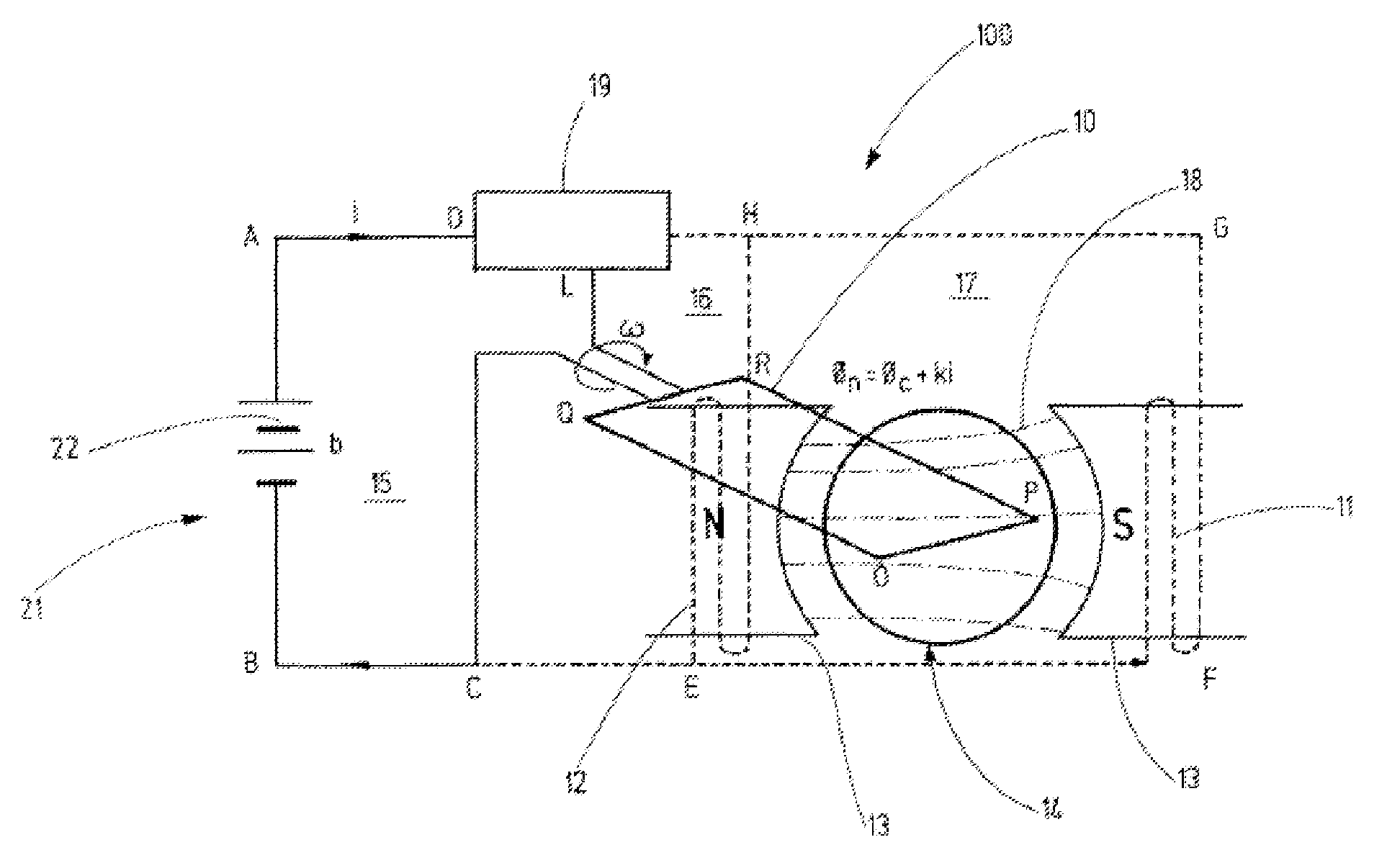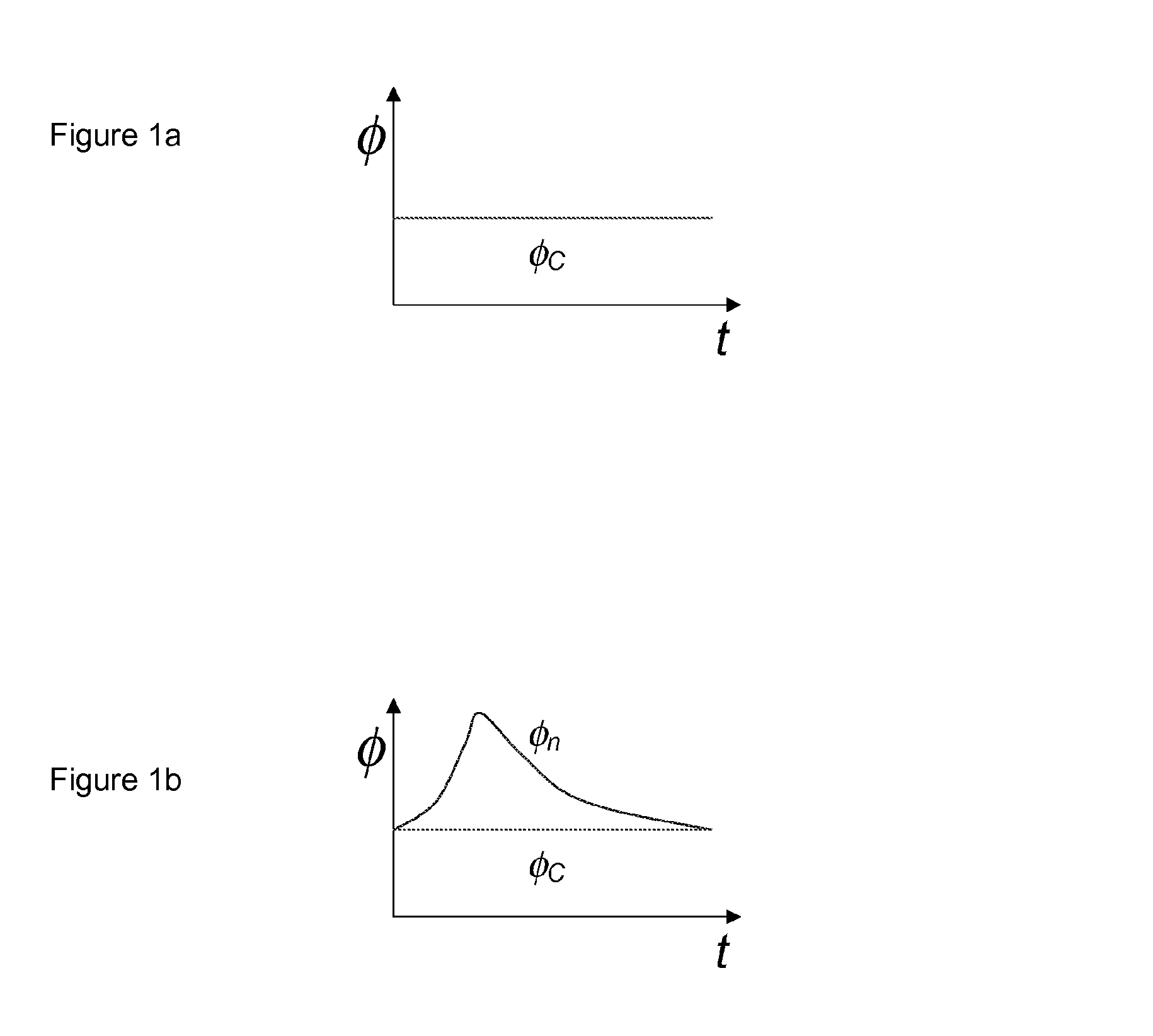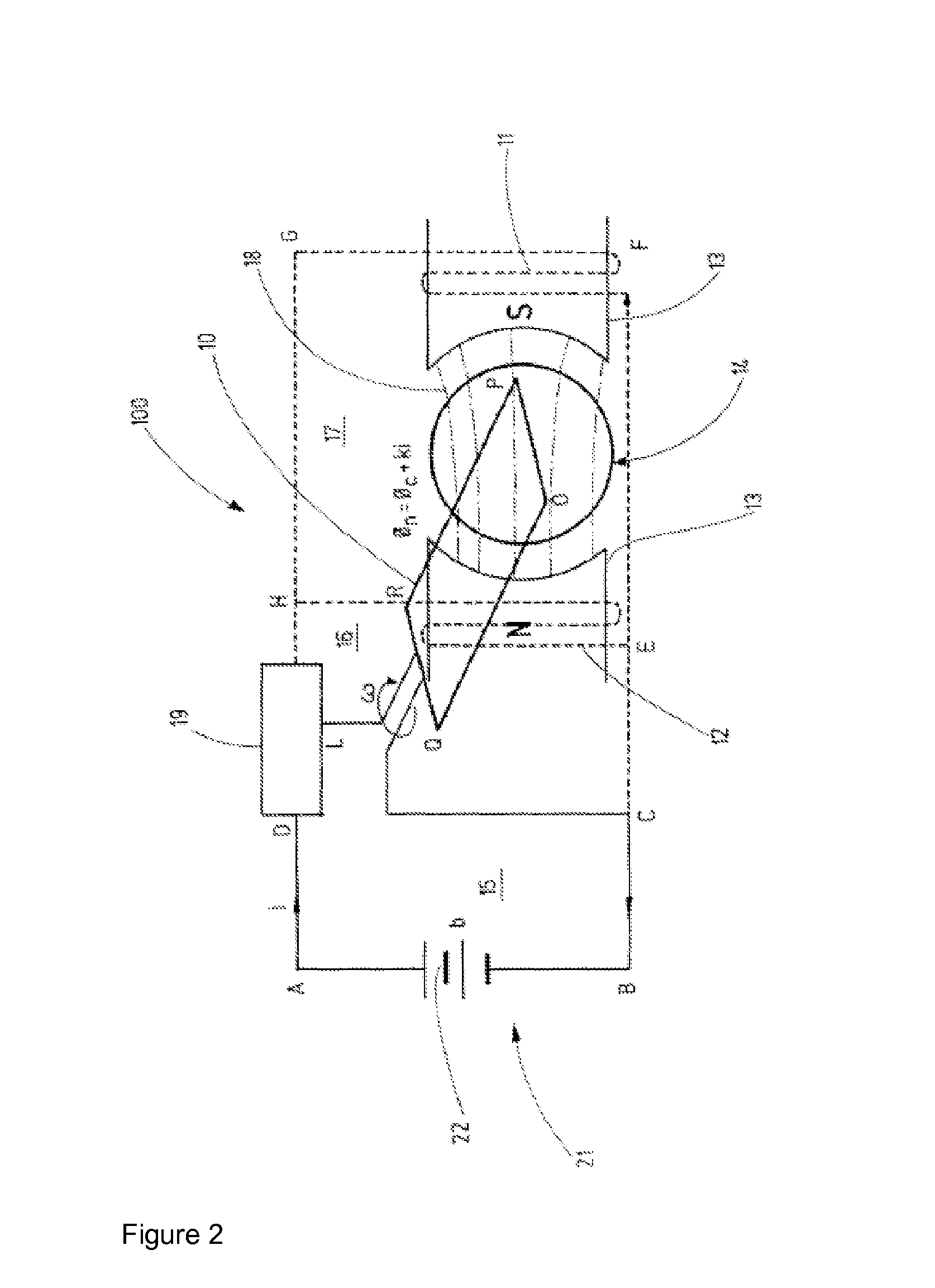Electrical regenerative braking
a technology of regenerative braking and electric motor, which is applied in the direction of electric generator control, motor/generator/converter stopper, dynamo-electric converter control, etc., can solve the problems of increasing the load of in-car electronics, and the current solution of regenerative braking is not effective if used at lower speeds, so as to achieve low speed, energy saving, and additional energy saving
- Summary
- Abstract
- Description
- Claims
- Application Information
AI Technical Summary
Benefits of technology
Problems solved by technology
Method used
Image
Examples
Embodiment Construction
[0031]It may be observed that the magnetic field øc existing across the coils remains constant with time. This can be represented by the plot in FIG. 1a. Due to this reason the regenerative braking according to the state of the art is not effective it used at lower speeds. Also the energy savings obtained are suboptimal.
[0032]To overcome these drawbacks of regenerative braking according to the state of the art, additional coils 11, 12 are placed around the permanent magnet 13 of the electrical regenerative braking 100 shown in FIG. 2. The braking 100 has an electric circuit 22 which contains the rotating brake coil 10 and the additional coils 11, 12 as elements.
[0033]According to Faraday's law an emf (Electro-motive force) is generated by the rotating brake coil 10, which is attached to a wheel 14 of the vehicle, due to the magnetic field øc of the permanent magnet 13. The magnetic field øc has the reference number 18. When the brakes are applied, assume that the points D and L beco...
PUM
 Login to View More
Login to View More Abstract
Description
Claims
Application Information
 Login to View More
Login to View More - R&D
- Intellectual Property
- Life Sciences
- Materials
- Tech Scout
- Unparalleled Data Quality
- Higher Quality Content
- 60% Fewer Hallucinations
Browse by: Latest US Patents, China's latest patents, Technical Efficacy Thesaurus, Application Domain, Technology Topic, Popular Technical Reports.
© 2025 PatSnap. All rights reserved.Legal|Privacy policy|Modern Slavery Act Transparency Statement|Sitemap|About US| Contact US: help@patsnap.com



